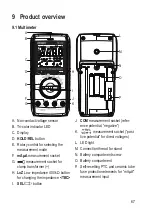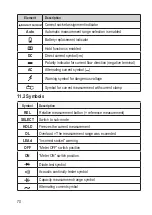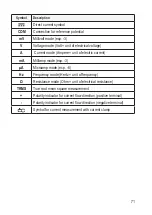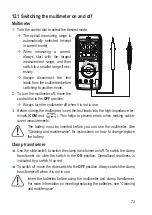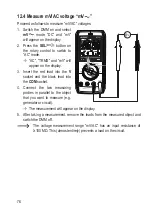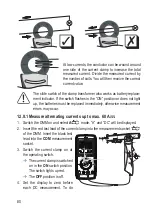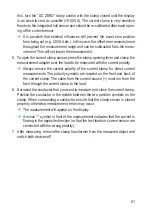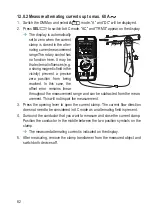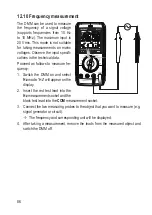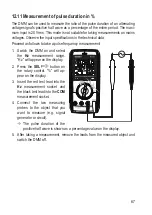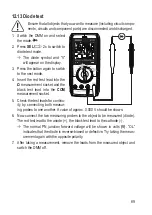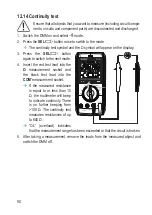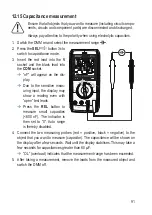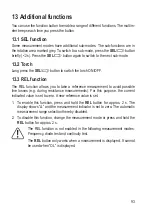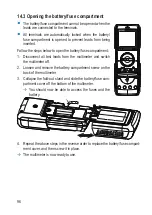
81
this, turn the “DC ZERO” rotary control with the clamp closed until the display
is as close to zero as possible (<0.050 A). The current clamp is very sensitive
thanks to the integrated hall sensor and should be re-calibrated after each open-
ing of the current sensor.
Æ
It is possible that external influences will prevent the exact zero position
from being set (e.g. 0.038 A etc.). In this case, the offset error remains linear
throughout the measurement range and can be subtracted from the meas-
urement. This will not impair the measurement.
5. To open the current clamp sensor, press the clamp opening lever and clamp the
measurement adapter over the lead to be measured with the correct polarity.
Æ
Always ensure the correct polarity of the current clamp for direct current
measurements. The polarity symbols are located on the front and back of
the current clamp. The cable from the current source (+) must run from the
front through the current clamp to the load.
6. Surround the conductor that you want to measure and close the current clamp.
Position the conductor in the middle between the two position symbols on the
clamp. When surrounding a conductor, ensure that the clamp sensor is closed
properly, otherwise, measurement errors may occur.
Æ
The measurement will appear on the display.
Æ
A minus “-” symbol in front of the measurement indicates that the current is
flowing in the opposite direction (or that the test leads or current sensor are
connected with the wrong polarity).
7. After measuring, remove the clamp transformer from the measured object and
switch both devices off.

